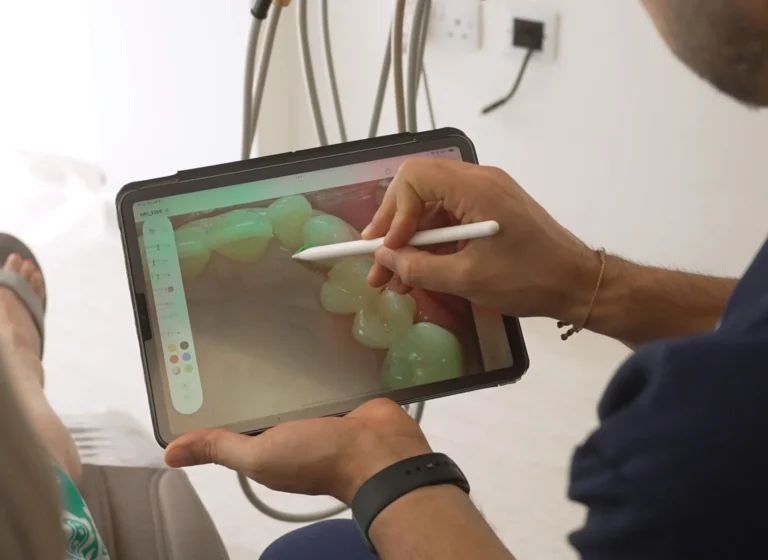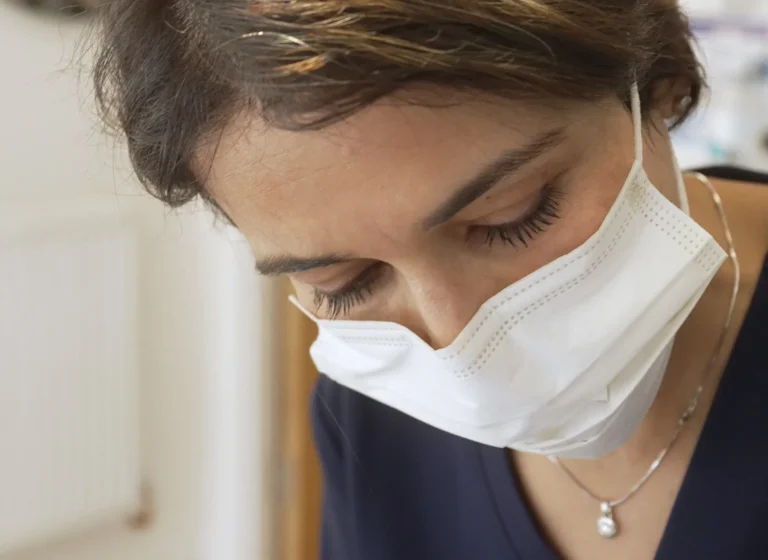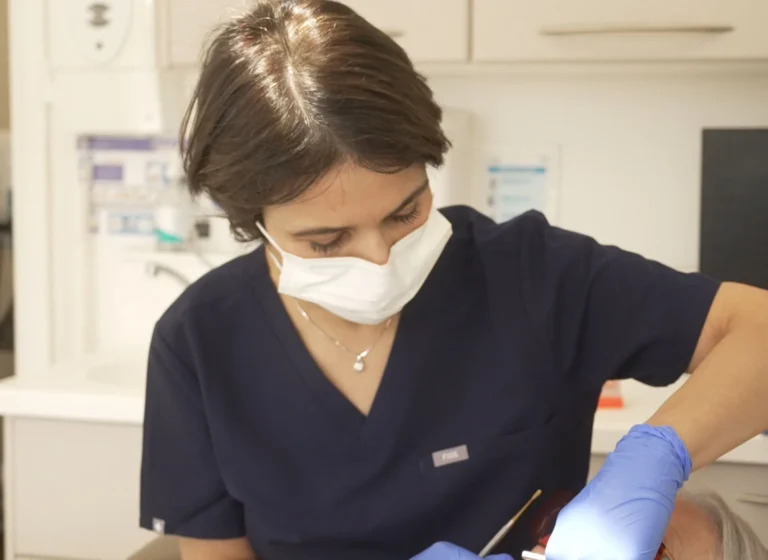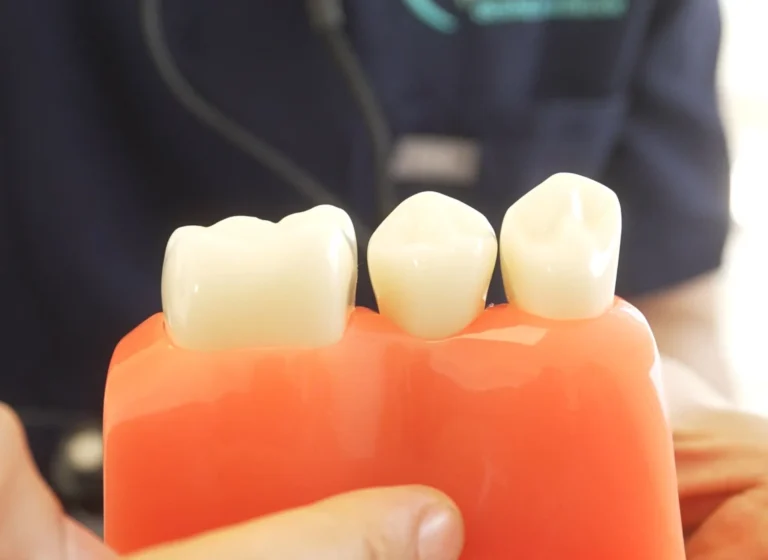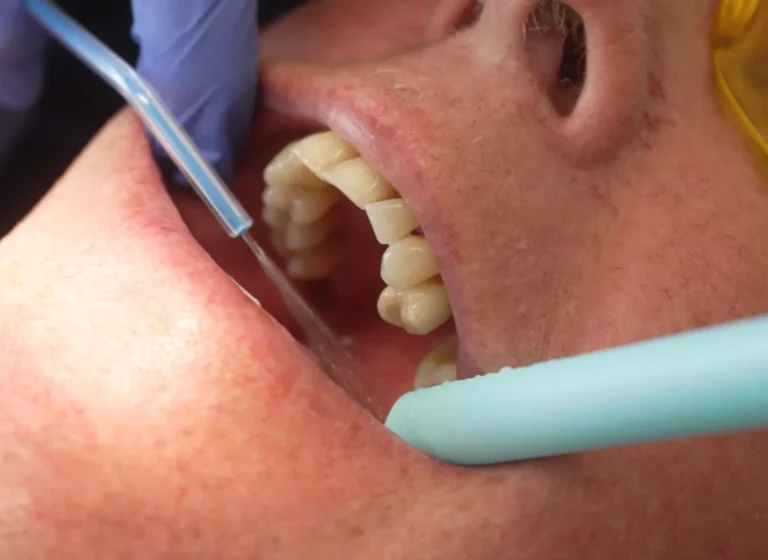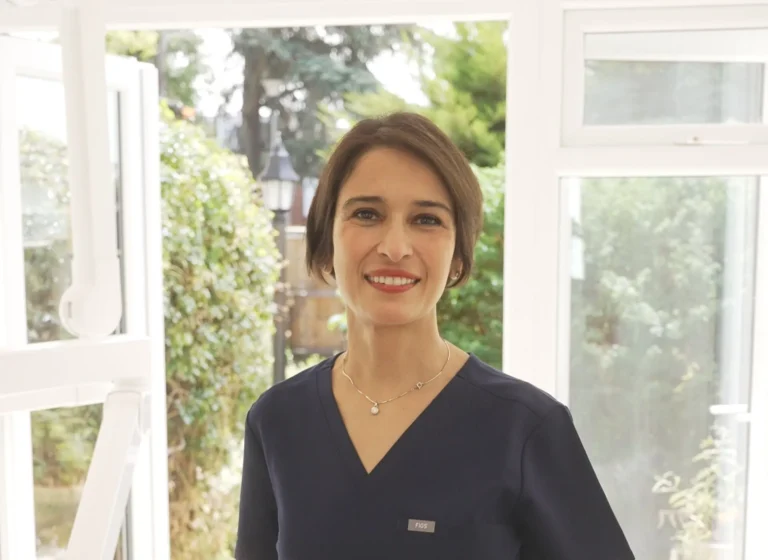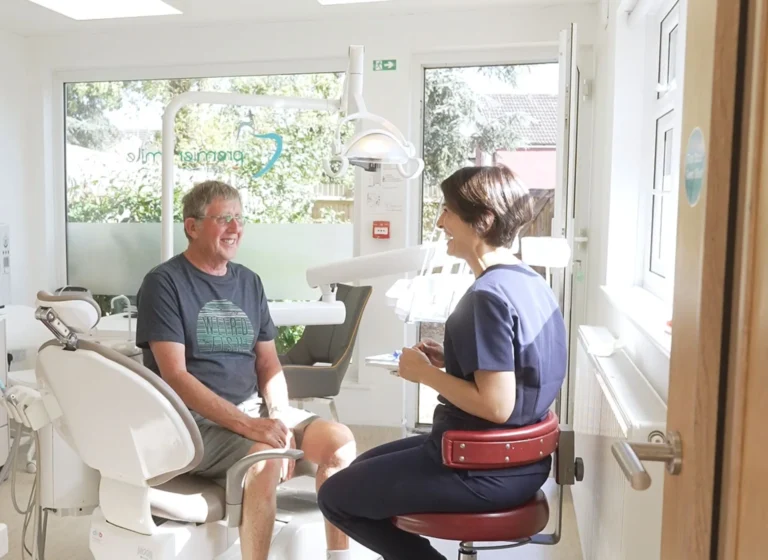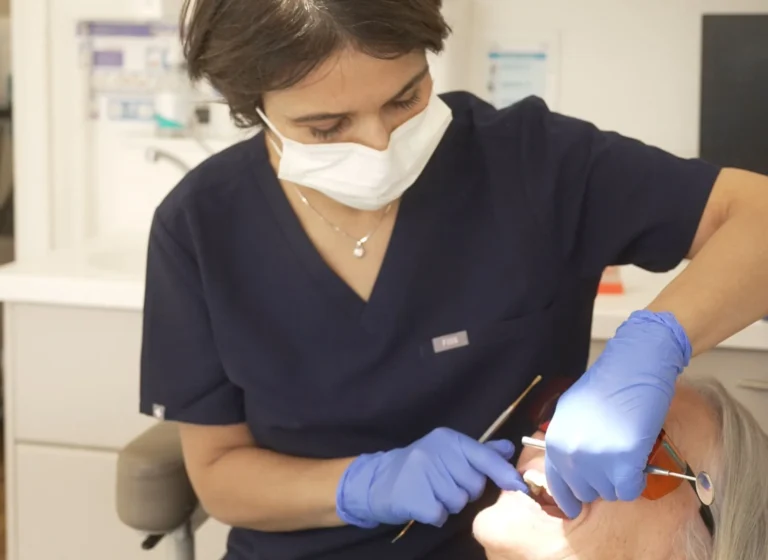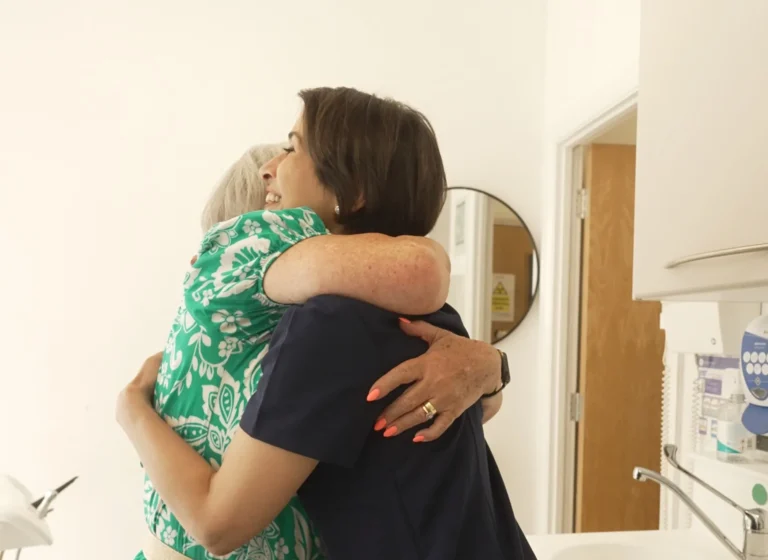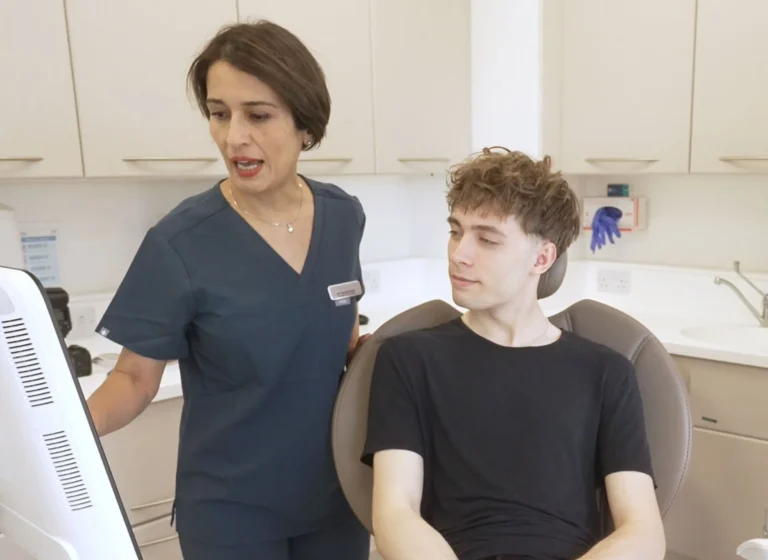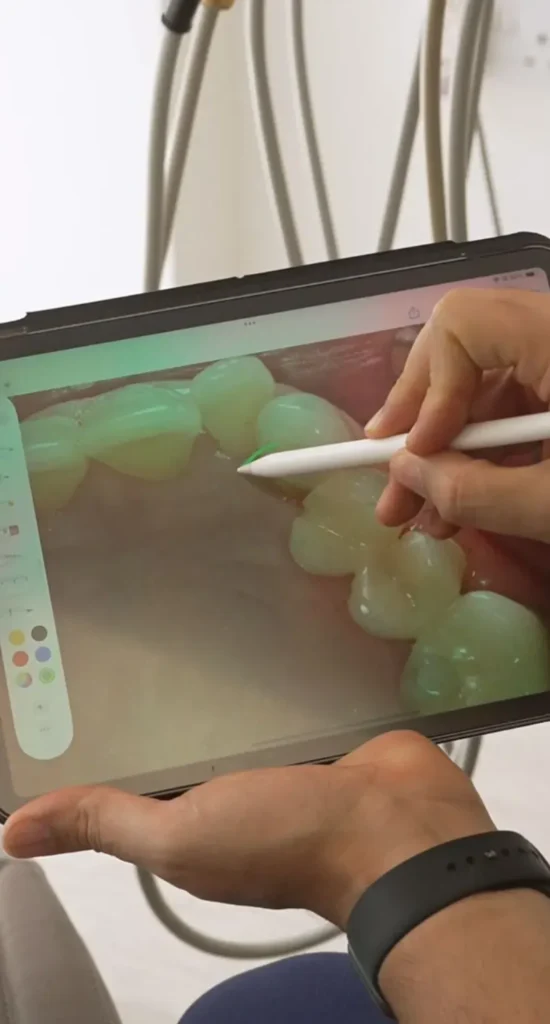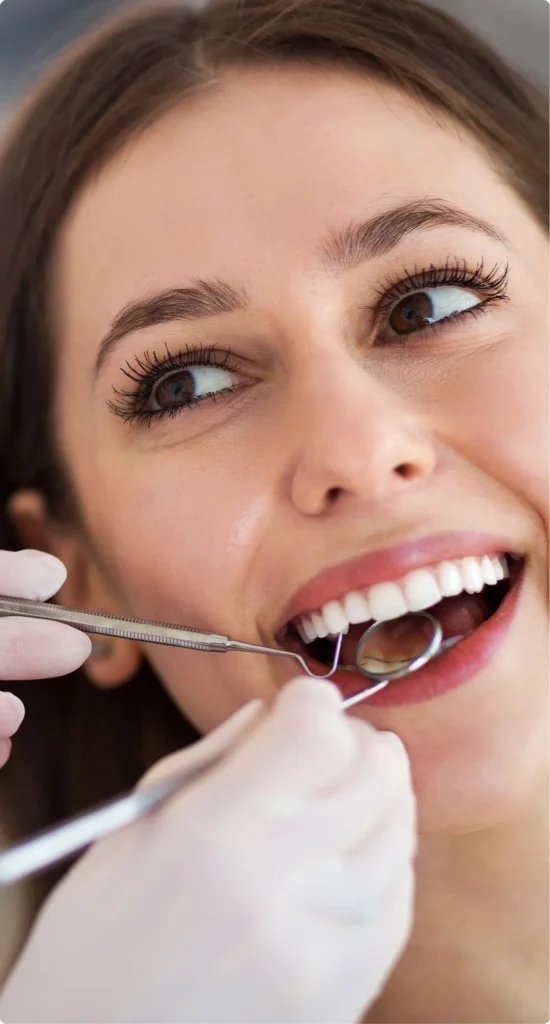What Does Gum Disease Look Like?
Gum disease is one of the most common yet underestimated oral health issues. Because its early signs are often painless, many patients don’t realise they have a problem until significant damage has occurred. Understanding what gum disease looks like is a critical step in early detection—and early treatment. According to Dr Nooshin Vasfi, recognising these visual signs allows patients to act before the condition progresses to advanced stages, potentially saving their teeth and gum tissue.
In its mildest form, gum disease is called gingivitis. It typically presents with very subtle symptoms, including:
- Gums that appear darker red or even purple instead of healthy pink
- Swelling or puffiness in the gum tissue around the teeth
- Bleeding when brushing or flossing, even gently
- Shiny or overly smooth appearance of the gums
- Slight tenderness to the touch or when eating
- A feeling of bad taste in the mouth or persistent bad breath
Dr Nooshin Vasfi emphasises that these symptoms might not cause any real discomfort in the early stages. That’s why many people assume everything is fine—until the disease becomes much harder to treat. At this early stage, gingivitis is still completely reversible with professional care and improved oral hygiene habits.
If these signs are present, Dr Vasfi advises patients not to wait. The next stage, periodontitis, leads to irreversible damage. In the following sections, we’ll break down what that more serious form looks like—and what actions you should take if you notice any warning signs.
What Does Advanced Gum Disease Look Like?
When gum disease progresses beyond gingivitis, it becomes periodontitis. At this stage, the damage goes beyond the soft gum tissue and begins to affect the bone that holds your teeth in place. According to Dr Nooshin Vasfi, periodontitis is not only more difficult to treat but can also result in permanent tooth loss if left unaddressed.
Here are the most visible signs of advanced gum disease that Dr Nooshin Vasfi urges patients to watch for:
- Gum recession: the gum tissue pulls back from the teeth, exposing the roots
- Visible pockets between the teeth and gums where food debris collects
- Loose or shifting teeth, which can change your bite
- Pus between the teeth and gums, indicating infection
- Pain or sensitivity when chewing, even soft foods
- Teeth appearing longer due to loss of gum tissue
At this stage, gum disease becomes not just a dental concern, but a systemic one. Research shows links between periodontitis and heart disease, diabetes, and other inflammatory conditions. Dr Nooshin Vasfi explains that treatment may involve non-surgical deep cleaning (such as scaling and root planing), laser therapy, or, in some cases, surgical intervention.
The earlier periodontitis is diagnosed, the better the outcome. Dr Vasfi uses digital imaging and precise diagnostic tools to assess bone levels, gum health, and inflammation. With this information, she develops a tailored treatment plan that targets both symptoms and causes.
Visual Differences Between Healthy Gums and Diseased Gums
To make it easier to recognise the difference, here’s a visual comparison, as outlined by Dr Nooshin Vasfi:
| Healthy Gums | Gum Disease (Gingivitis/Periodontitis) | |
|---|---|---|
| Colour | Pale pink | Red, purple, or darkened |
| Texture | Firm and stippled | Smooth, shiny, or swollen |
| Bleeding | Does not bleed | Bleeds easily when brushing or flossing |
| Gumline | Snug around teeth | Receding or forming pockets |
| Odour | Neutral breath | Persistent bad breath |
| Pain | No pain | Tenderness or discomfort |
According to Dr Nooshin Vasfi, seeing these differences can help patients determine when it’s time to act. If you’re unsure whether your symptoms are related to gum disease, a consultation can provide clarity and direction. The earlier you seek support, the easier and less invasive the treatment.
Why Early Detection Matters
Early detection is not just about preventing tooth loss—it’s about protecting your overall health. Dr Nooshin Vasfi stresses that gum disease, especially when it becomes chronic, has been linked to more than just oral issues. There are strong correlations with:
- Cardiovascular problems
- Type 2 diabetes
- Respiratory infections
- Adverse pregnancy outcomes
- Increased risk of stroke
By identifying what gum disease looks like early, patients can prevent these broader health risks. Dr Nooshin Vasfi uses a gentle, preventive approach, helping patients stop progression before surgery or tooth loss becomes necessary.
Early signs should never be ignored. Dr Vasfi recommends biannual hygiene check-ups and periodontal screenings, especially for patients with risk factors like smoking, diabetes, or a family history of gum problems. Prevention is always easier—and more comfortable—than treatment.
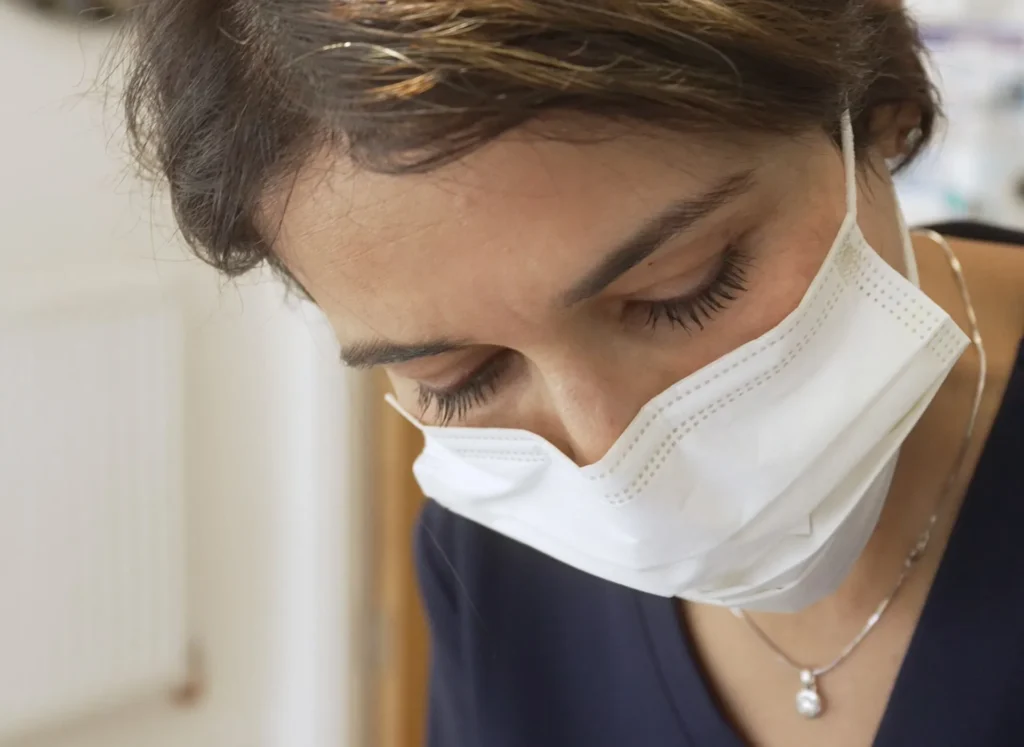
Can Gum Disease Look Different From Person to Person?
Yes—gum disease can look different depending on the individual, and that’s one of the reasons it often goes undiagnosed. According to Dr Nooshin Vasfi, the presentation of gum disease varies based on a range of factors including genetics, oral hygiene habits, immune system function, smoking, underlying health conditions, and even age.
Some patients may experience intense bleeding with only mild swelling, while others may develop deep gum pockets without noticeable discomfort. Dr Nooshin Vasfi often sees patients who are surprised to learn they have moderate periodontitis, even though they’ve experienced no pain at all.
Here are a few variables that affect the appearance of gum disease:
- Smokers often have less obvious bleeding but more severe gum recession
- Diabetics may show increased inflammation and faster progression
- Younger patients tend to present gingivitis, while older adults show bone loss
- Stress and medications can cause dry mouth and increase plaque buildup
- Hormonal changes (pregnancy, menopause) may cause red, swollen gums
Because the visual signs can be subtle or atypical, regular check-ups are the most reliable way to catch gum disease early. Dr Vasfi uses probing measurements and imaging to detect underlying issues not always visible in the mirror. If you have any of the risk factors mentioned, being proactive with screenings is essential.
Remember, gum disease doesn’t always look the same—but the earlier it’s caught, the better your outcome.
What Should You Do If Your Gums Don’t Look Healthy?
If you notice anything unusual—swelling, bleeding, darkened gums, or bad breath that won’t go away—it’s time to take action. Dr Nooshin Vasfi advises that patients should never ignore these signs, even if they don’t come with pain. Gum disease can be silent but destructive.
Here’s what Dr Nooshin Vasfi recommends as a next step:
✅ Book a professional evaluation: Don’t try to self-diagnose or treat gum disease at home. A clinical exam will determine the severity and stage of the disease.
✅ Schedule a deep cleaning if needed: Mild gingivitis may require only a scale and polish. More advanced cases might involve scaling and root planing.
✅ Improve your at-home routine: Brush at least twice a day, floss daily, and consider using an antimicrobial mouthwash.
✅ Quit smoking: Tobacco use is one of the leading contributors to gum disease progression and poor healing.
✅ Stay consistent with maintenance: Once treated, gum disease requires ongoing care. Dr Vasfi often recommends professional cleanings every 3–4 months for high-risk patients.
Ignoring gum health can have long-term consequences. Infections can spread, bone can be lost, and teeth can become loose or even fall out. The good news is that early intervention works—and Dr Vasfi provides personalised, minimally invasive treatment to preserve your gums, teeth, and confidence.
Conclusion – What Does Gum Disease Look Like?
Knowing what gum disease looks like empowers you to take control of your oral health before it’s too late. From subtle redness and bleeding in gingivitis to receding gums and loose teeth in periodontitis, each visual clue is your body’s way of signaling that action is needed.
Dr Nooshin Vasfi encourages patients not to wait for pain to develop. At her clinic, gum health is taken seriously, with modern diagnostics, compassionate care, and evidence-based treatment plans designed to restore comfort and confidence.
If you’ve noticed bleeding gums, swelling, or persistent bad breath, schedule your visit today. Acting early can save your smile—and much more.
Contact me at info@nvendospecialist.co.uk to request more information today!
Or visit me at Premier Smile Dental Excellence in 34 Hockliffe St, Leighton Buzzard LU7 1HJ, UK.

